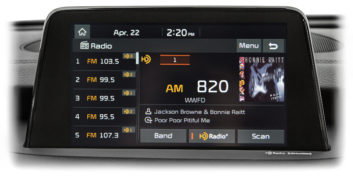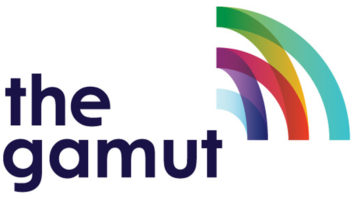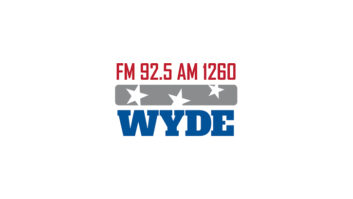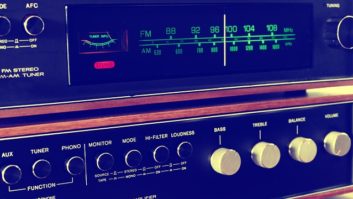 The author is director of broadcast business development for HD Radio intellectual property holder Xperi.
The author is director of broadcast business development for HD Radio intellectual property holder Xperi.
There is an important AM digital comments filing approaching on Monday. That means it is time to get serious about all-digital AM broadcasting.
And that means that with all you may have heard recently about the pros and cons of going all-digital with your AM station, it’s about time for some plain talk about what kind of AM station this conversion could potentially benefit, and where it might not yet make financial sense.
First, in the interest of full disclosure, as a 50-year broadcast veteran with a large collection of working antique AM radios, I have to admit to mixed feelings about any AM station dropping their analog signal for all-digital. I was that kid in the Midwest who grew up listening at night to WABC in New York, WCFL in Chicago, KDKA in Pittsburgh, WLW in Cincinnati, WOAI in San Antonio and so many other 50 kW clear channel stations.
[Read: Dates Set for Comments on Digital AM Proposal]
But that was before computers, cellphone chargers, CFL light bulbs and so many other new gadgets that just happened to radiate noise smack in the middle of the AM broadcast band. It may rub you the wrong way to have to get an FM translator to keep your AM station viable in the 21st century, but our business has always been one of constant change. We’ve always had to evolve, and there have always been naysayers predicting the end of our medium every time we faced a new challenge.
First it was TV, then it was 8-tracks, then it was cassettes, then the Walkman, then iPods … the list goes on and on. But in the spring of 1969 when I was a senior in high school, Arbitron data showed that some 95% of persons 12+ listened to radio in a given week. Fast forward 50 years to spring 2019, and that number has plummeted to … 92%! That’s right — only 3% attrition in 50 years, while newspapers have suffered critical losses and continue to fold left and right, and TV viewership has become so fragmented that the major networks have all suffered double-digit audience losses. But unlike TV and print, audio listening has never been a zero-sum game. More choices have always meant more listening to more audio sources.
Radio has maintained its commanding share of market by constantly changing, growing and evolving. Consider the option of going all-digital AM as just another possible marketing tool in your arsenal, one with several unique ramifications to consider:
First: Does your AM station currently simulcast on an FM translator? This is a key piece of the puzzle. Providing an alternative place to hear your station, one not noise-challenged, can go a long way to keeping listeners and advertisers happy. And that doesn’t necessarily mean that you need to own your own. There are many organizations that own multiple translators in certain markets, and may be willing to lease one to a noncompetitive station. Don’t forget, there are some translators operating at 10 or 20 watts because they are being fed remotely, but might be capable of going up to a full 250 watts if they are being fed from a local program source.
Second: It’s not enough to just simulcast on that translator, but to make sure all your listeners know that there is a noise-free alternative way to hear your station. Weaning your listeners off of your AM signal and onto your FM translator where possible is a vital part of stemming audience erosion. You need to extensively promote your “alternative” FM signal. Keeping your FM simulcast a secret defeats the whole purpose of having a translator.
[Read: Is the Time Right for All-Digital AM?]
Third: Technically, is it cost-effective for you to go all-digital? If your current antenna and transmitter setup are digital-capable, it is worth considering. If it just means replacing an aging AM transmitter with limited operational life left, it may be worth considering. But if your current transmission plant is not capable of passing a digital signal, and it isn’t feasible to replace transmitter and antenna right now, then all-digital may not be a reasonable option to consider at this time.
Obviously, AM all-digital doesn’t make sense in every case, but there are several scenarios where it may make financial and long-term sense to consider conversion at this time. The benefits can be significant, especially if your market has significant HD Radio automotive penetration. Right now, an average of 21.4% of all the cars on the road in the U.S. have an HD Radio receiver, and 100% of those receivers can receive all-digital AM broadcasts. But many individual markets have much higher penetration numbers, with several exceeding 33% — basically one car in three! And many of those AM HD Radio receivers have the ability to show album art and advertiser logos when in all-digital mode just like their FM counterparts:
In addition, currently there is no associated licensing cost to go all-digital. Through at least July 2020, Xperi is waiving the license fee for AM stations that go directly from analog to MA3 all-digital mode. And since the technology does not currently support multicasting on AM, there are no future licensing costs associated with going all-digital.
But perhaps the strongest argument for at least considering all-digital is the real-world experience of the Hubbard station in Frederick, Md., WWFD(AM)/820 kHz. For the last 18 months, they have been operating in all-digital mode under special experimental authority from the FCC. They have an FM translator, but it is worth noting that even though they had been simulcast with their analog FM translator since the fall of 2017, prior to commencing MA3 mode all-digital operation, the station had not appeared in the local Frederick, Md., Nielsen rating book in recent memory.
[Read: Fowler: Let “Mr. Market” Decide Best AM Digital System]
But beginning the very first survey period after starting all-digital operations, WWFD began showing up with measurable listening audience in that Nielsen survey. Nielsen measures the Frederick market twice annually during the spring and fall survey periods using their diary methodology. In both the spring and fall 2019 surveys, WWFD (and their associated analog FM translator) showed up with measurable listening audience.
In prior surveys dating back to before the station began their simulcast with their analog FM translator, they had never showed up with any measurable audience. This new audience is another example of how voluntary transition to MA3 mode enables better services for consumers and can breathe new life into the AM band. Content has always been king, and the eclectic music selection of “The Gamut” has become a destination format for WWFD listeners. The AM all-digital sunrise has made this music format viable on the AM band.
But are they listening to the all-digital AM or the analog FM? Who cares? As an advertiser, what you really want is to reach the most people, the most times, for the fewest dollars. As a station operator, what you really want is to continue to run a viable business, provide a service to your local community, and deliver a solid advertising vehicle for your advertisers, all while generating a modest profit.
For today’s increasingly signal-challenged AM station, all-digital may be just be the solution you didn’t know you were looking for.












